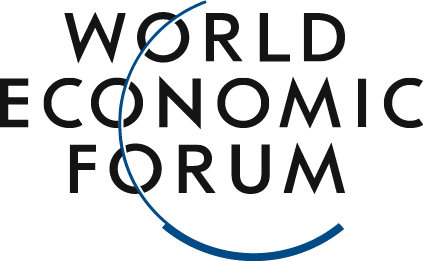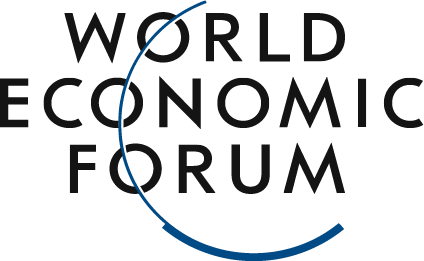Businesses need to adapt to a constantly changing world.
Image source:Annie Spratt on Unsplash
Julia Devos
Global Managing Director of the World Economic Forum's New Champions Community
The rapid advancement of digital technology and escalating climate threats have left many business leaders concerned about the future of their organizations.
To survive and thrive over the next decade, all businesses must undergo a fundamental transformation.
To help business leaders effectively address this challenge, the following six strategies can provide a solid foundation for corporate transformation and serve as a roadmap for their long-term survival.
In today’s rapidly evolving world, the question is no longer, "Will disruptive change impact businesses?" but rather, "When will disruptive change strike?"A survey released by PwC in January 2024 revealed that 45% of CEOs worldwide are concerned that, without profound transformations, their companies may not survive over the next decade—particularly as they grapple with climate change and advancements in artificial intelligence. This sense of worry is global, transcending industries and company sizes alike, underscoring the mounting pressures businesses face as they navigate rapid digital innovation and unprecedented climate challenges.René Rohrbeck, Professor and Chair of Foresight, Innovation, and Transformation at France's Northern Higher School of Business, states: "The ability to embrace and leverage change will determine the winners and losers of the 21st century." In his 2023 Global Future FITness Study and earlier research, Rohrbeck found that companies with high "future fitness" outperformed their competitors by 33% in profitability, saw a 200% increase in market value, and had a 44% higher likelihood of becoming leaders among top-performing firms within their industry clusters.Therefore, although the realities driving CEO anxiety are complex and multifaceted, the message remains simple: to survive and thrive in the next decade, businesses must undergo a fundamental transformation. This requires proactive leadership that views transformation not as a one-time initiative, but as an ongoing journey.Companies must adapt to numerous challenges, particularly the dual pressures of climate risks and technological disruption.1. Environmental PressureClimate change has moved beyond corporate social responsibility—it’s now an integral part of business strategy. Consumers, regulators, and stakeholders are increasingly demanding that companies embrace sustainability as a standard expectation. According to a September 2024 report by Bain & Company, 60% of consumers have heightened their focus on climate issues over the past two years. Moreover, more than one-third of B2B customers say they’d be more likely to switch suppliers if sustainability concerns aren’t addressed, while nearly 60% of these customers indicate they’d take this step within three years. As a result, businesses are being called upon to demonstrate responsible practices—not just as a moral obligation, but also as a competitive necessity.Meanwhile, the accelerated pace of technological advancement also presents a double-edged challenge. Digital transformation—particularly in areas like artificial intelligence—is both a powerful catalyst for business growth and a potential threat to companies that fail to keep up. Successfully integrating digital tools can enhance agility, efficiency, and customer experience; however, neglecting these advancements risks leaving businesses behind in an increasingly tech-driven marketplace.Six Strategic Initiatives: Preparing for the FutureTo help business leaders effectively navigate this critical transformation challenge, the following six strategies can provide a solid foundation for the transition—and serve as a roadmap for long-term survival.1. Reinventing from withinReimagining isn’t just about tweaking the business model—it’s about fundamentally rethinking the core principles and processes that drive a company’s daily operations. This requires a shift in mindset, fostering a culture that values adaptability and embracing a growth-oriented approach to change. By embedding resilience at the heart of operations, leaders can empower their organizations to navigate new challenges with agility—whether those challenges stem from technological disruptions, regulatory shifts, or evolving market demands.2. Leveraging Megatrends to Build ResilienceToday’s business landscape is shaped by major, interconnected megatrends. Climate change, technological advancements, regulatory shifts, and evolving consumer behavior are all deeply intertwined. For instance, sustainability-focused regulations can drive demand for eco-friendly products, while breakthroughs in green energy or artificial intelligence may redefine industry standards altogether. To navigate these complex and dynamic changes, tools like the World Economic Forum’s Strategic Intelligence Platform offer invaluable insights into how these trends overlap and influence one another. Leaders who grasp and proactively plan for these interdependent relationships will be better equipped to make informed decisions—and even anticipate shifts before they happen.3. Driving Growth Through Green PracticesPwC estimates that 55% of global GDP depends on nature and ecosystem services. Addressing environmental risks goes beyond just achieving carbon neutrality. To build resilience, businesses should prioritize water resource protection, biodiversity conservation, and the sustainable use of resources. Nature-based solutions—such as leveraging natural processes to restore ecosystems or designing products with minimal environmental impact—can help mitigate risks while fostering sustainable growth. These practices not only safeguard natural resources but also enhance business value, helping companies earn trust from consumers who are increasingly prioritizing ecological integrity.4. Embrace artificial intelligence in a clear and transparent mannerTreat artificial intelligence as a tool, not an end goal. For companies, AI offers opportunities to streamline operations, boost customer engagement, and drive innovation. However, the key is ensuring that AI initiatives align with ethical standards and do not erode employee trust. Transparent communication about how AI is being used, its role in decision-making, and its potential impact on employees can help transform AI into a empowering tool—rather than a disruptive force. By establishing clear guidelines and ensuring AI remains consistent with the organization’s core values, businesses can build trust and leverage AI to enhance, rather than undermine, their growth and success.5. Fostering innovation through collaborationAddressing today’s complex challenges requires collaboration. Building a network of like-minded businesses, industry organizations, and innovators can bring fresh perspectives, foster knowledge sharing, and drive innovation. For instance, partnering with sustainable suppliers can reinforce a company’s commitment to eco-friendly practices, while collaborating with tech firms can accelerate digital transformation initiatives. Such networks enable businesses to exchange insights and resources, helping each other adapt more effectively to change. In an era marked by relentless disruptive transformations, no single company can tackle these challenges alone. By working together, organizations can learn from one another’s successes and failures, ultimately strengthening their collective resilience in the face of uncertainty.6. Clearly define your goals and ensure that your actions align with them.Finally, a clear and authentic goal can define a company’s purpose and serve as its guiding compass during times of change. Businesses that can articulate their objectives clearly and stay true to them are better equipped to thrive in uncertain environments, cultivate loyal customers, and attract motivated, forward-thinking employees. Moreover, goal-driven companies find it easier to align their sustainability initiatives, technological innovations, and long-term strategies with the issues that truly matter to their stakeholders.Charting a roadmap for resilience and growthA company’s survival and sustainable growth depend on the CEO’s commitment to innovation and responsibility. Business leaders who prioritize ethical practices and forward-thinking transformation can help their organizations thrive in an increasingly interconnected, eco-conscious, and technology-driven economic landscape. The real question isn’t just, “Can my business survive?” but rather, “How can we evolve to meet the demands of tomorrow?”In the next decade, the companies that will thrive are those that view disruptive change as a transformative opportunity. By integrating sustainability, digital adaptability, and collaborative innovation into their operations, businesses can navigate today’s market uncertainties—and position themselves as resilient, sustainable key players in the global economy.Looking ahead, the immediate priority for leaders is clear: adaptation is not just about survival—it’s about thriving. By adopting targeted strategies and demonstrating a committed, responsible approach to transformation, businesses can secure their place in the future, delivering lasting value to shareholders, employees, and the communities they serve.
The above content solely represents the author's personal views.This article is translated from the World Economic Forum's Agenda blog; the Chinese version is for reference purposes only.Feel free to share this on WeChat Moments; please leave a comment below the post if you’d like to republish.
Translated by: Sun Qian | Edited by: Wang Can
The World Economic Forum is an independent and neutral platform dedicated to bringing together diverse perspectives to discuss critical global, regional, and industry-specific issues.
Follow us on Weibo, WeChat Video Accounts, Douyin, and Xiaohongshu!
"World Economic Forum"





